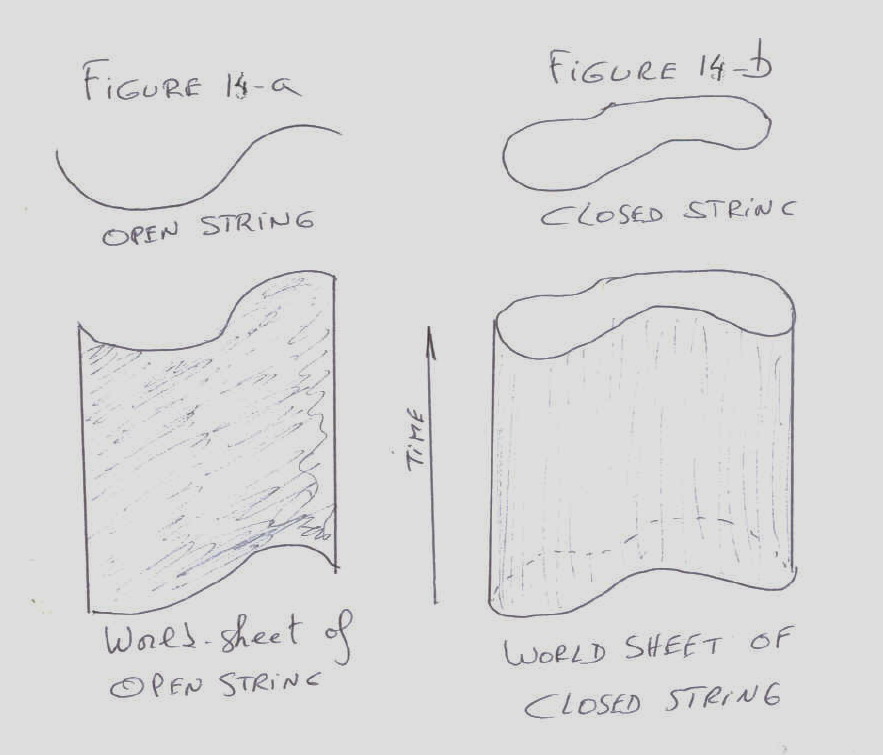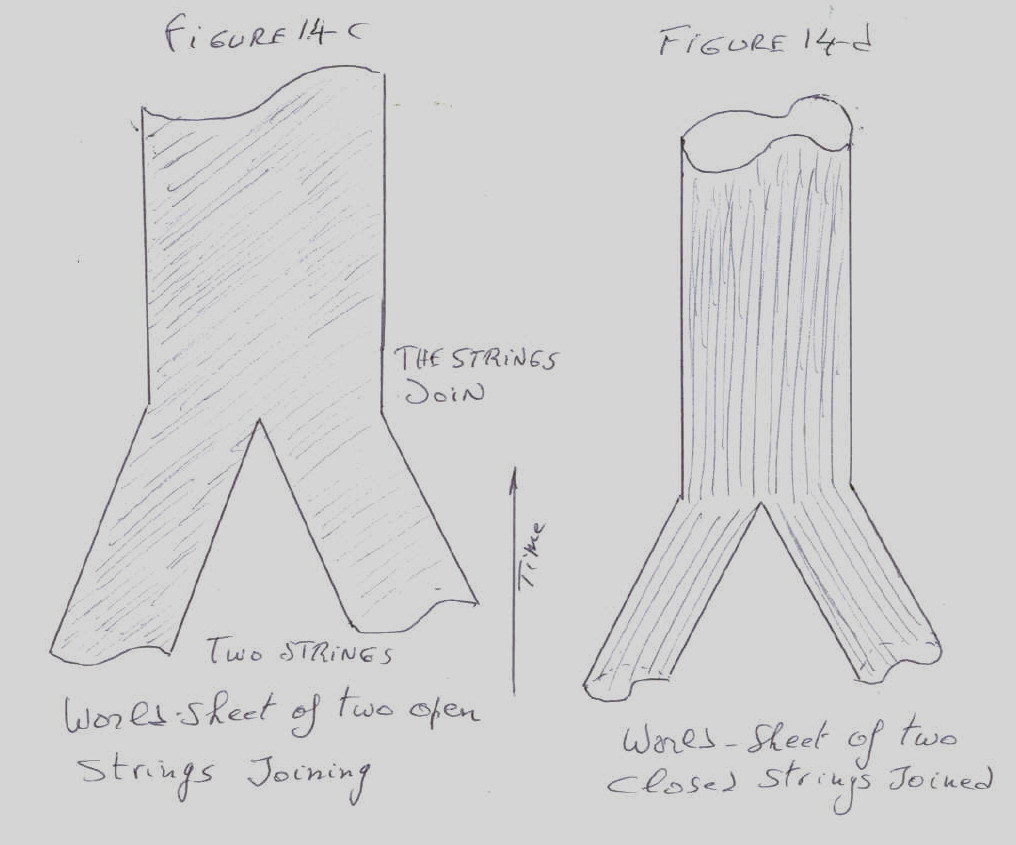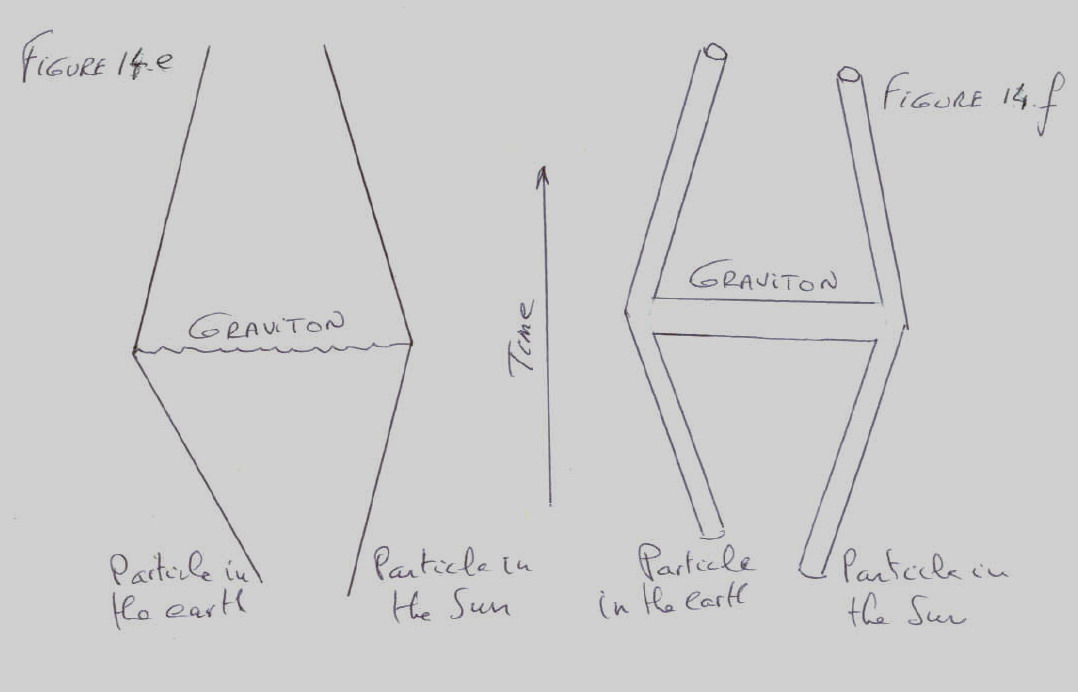It will be very difficult to construct a unified theory covering everything that happens in the universe. Until now scientists have proposed partial answers dealing with a limited amounts of facts, ignoring the others, or introducing artificial approximations (such as the electric charge of the electrons, the relative masses of electrons and protons, etc. found experimentally). The hope remains, however, that one-day a complete unified theory will be found. Einstein tried to do it during most of the second half of his life and failed.
Such a theory must links together:
- The theory of relativity
- Quantum mechanics
- The gravity, electromagnetic and nuclear forces
- The uncertainty principle
Forces or interactions between matter particles
Quantum mechanics has changed completely our views concerning the forces, or interactions, between matter particles. These are now seen as an exchange of force-carrying particles. For instance, if an electron emits such a force-carrying particle, the electron recoils and its velocity changes. The force-carrying particle then collides and is absorbed by another matter particle whose motion is also changed. The process of emission and absorption of a force-carrying particle is the same as if there had been a force acting on, or between, the two matter particles.
Each type of force is carried by its own type of force-carrying particle. If this force particle has a big mass, it will only act at short range. On the other hand, if the force-carrying particle has a small or no-mass, then it will act at long range. These force-carrying particles are called "virtual particles" because particle detectors cannot detect them. We only know they exist by the forces their create between matter-particles.
Force carrying particles can be divided in four classes according to the
strength of the force that they carry and the particles with which they
interact:
- The gravitational force is universal in the sense that every particle
is subject to it in proportion to their mass, or energy. It is the weakest
of the four forces and, normally, we would not notice but for two reasons:
it acts over long distance, and it is always attractive. For instance, all
matter particles of the sun and the earth are subject to it and, adding
up all these elementary forces, creates a force that cannot be ignored.
In quantum mechanics language, the gravitational force between two matter
particles is carried by a particle named graviton of spin 2. The graviton
has no mass so this force has a long range. If we go back to the example
of the earth and the sun, the gravitational force between them is due to
the exchange of gravitons between each of their particles. Gravitons are
virtual particles, but their effect is real, visible and measurable: it
makes the earth orbit the sun. Real gravitons make gravitational waves,
but they have never been detected yet.
- The electromagnetic force interacts with electrically charged particles
such as protons, quarks, and electrons but not with neutral particles such
as neutrons and gravitons. This force is much stronger that the gravitational
force. The electromagnetic force between two electrons is about 10E+42 bigger
that the force of gravity between them. As the electrical charges can be
either positive or negative, the force between two positive -or negative-
charges is repulsive, whereas the force between two particles with electrical
charges of different signs is attractive. A large piece of matter such as
the earth, or the sun, has more or less the same amount of positive and
negative charges, and so the repulsive and attractive forces cancel each
other, and the resulting total electromagnetic force is close to nothing.
At the level of atoms and molecules, the electromagnetic force is the dominant
one. The electromagnetic attractive force between electrons (negative charge)
and protons (positive charge) makes the electrons to orbit around the nucleus
in the same way that the gravitational force makes the earth orbits around
the sun. The electromagnetic attraction is said to be due to the exchange
of a large number of virtual photons of mass zero and of spin 1. But when
an electron changes from one allowed orbit to another closer to the nucleus
it emits energy in the shape of real photons that can be seen as visible
light, if it has the right wavelength, or by photon detectors such as photographic
films. Conversely, if a real photon hits an atom, one of the electrons can
go on a higher orbit, the photon looses it energy and is absorbed.
- The so-called weak nuclear force that is responsible for radioactivity
acts on all matter particles of spin ½, but not on the particles
of spin 0, 1 or 2 such as photons and gravitons. In 1967 the British Abdus
Salam and the American Steven Weinberg discovered that, in addition to the
photon, there were three other particles of spin-1 known as massive vector
bosons that carry the weak force. They are called W+, W- and Z 0 each with
a mass of about 100 GeV. According to the new theory these particles exhibit
a property described as spontaneous symmetry breakdown. This means that
what appears to be completely different particles at low energy are similar,
although in a different state at high energy when they behave in the same
way. At energy above 100GeV, the three new particles, Z+, Z- and Z 0, and
the photons behave in the same way. However at lower energy, which is their
normal state, the symmetry between the particles does not exist anymore,
their mass increases greatly, and the forces they carry have a very short
range. These three particles were first produced at CERN (European Centre
for Nuclear Research) in Geneva Switzerland, in 1983.
- The strong nuclear force holds the quarks together in the protons and
neutrons; it also holds the protons and neutrons together in the atom nucleus.
This force is assumed to be carried by so-called "gluon" particles
of spin -1 that interacts only with themselves and the quarks. This strong
force has a property called confinement: it always binds particles in combinations
that have no colour. As a consequence one cannot have a quark alone because
it would have a colour; three quarks -a red, a blue and a green- are always
joined together by gluons to form neutrons or protons (mixing the red, blue
and green colours gives white). The only other possibility is for quarks
(for instance red ones; but it is also true for the green and the blue quarks)
to be joined to anti-quarks of anti-red colour to form mesons that are unstable
because quarks and their anti-quarks can and will annihilate each former
to form electrons and other particles. Confinement also prevents to have
a gluon on its own, because gluons too have colour. Gluons must join together
so that their combined colour is white when they form an unstable particle
called a glueball. Another property of the strong nuclear force is called
asymptotic freedom. At normal energy, the nuclear force is very strong,
but it has been shown experimentally that at high energy the nuclear force
becomes much weaker allowing the quarks and gluons to behave more or less
like free particles.
Grand Unified Theories
On the base of the successful unification of the electromagnetic and weak nuclear forces, scientists wanted to go one step further and produce a so-called Grand Unified Theory (GUT) that would also include the strong nuclear forces. Gravity forces would still be left out, limiting its scope, but it would still be a big step towards a completely unified theory that should also include gravity. Einstein worked most of the second his life towards this aim, but to his great displeasure, he did not succeed.
The electromagnetic and the strong and the weak nuclear forces are combined in grand unified theories (GUT), but these theories are still not very satisfying because gravity is still missing. Moreover many experimentally known data -such as the relative mass of particles- must be introduced in the equations because they are not predicted by the theory. However it is an improvement on the general theory of relativity, which, one must remember, does not include the uncertainty principle while the GUTs rely strongly on quantum mechanics.
The main difficulty in finding a theory that unifies gravity with the other forces is due to the fact that general relativity does not quantum theory and does not take into consideration the consequences of the uncertainty principle. Yet the more limited theories (GUT) dealing with the other forces are based on quantum mechanics. Unifying gravity with the other forces requires incorporating the uncertainty principle in general relativity.
The first step towards a global solution would be to combine general relativity with the uncertainty principle. But this is far from easy although there are only two quantities that need to be adjusted: the strength of gravity and the cosmological constant. But even this does not solve the problem.
The reason why a unified theory is so difficult to produce -and it has not been done yet- is due to the fact that the uncertainty principle implies that even empty space is filled with virtual particles and antiparticles. If it were not the case, it would mean that all the fields in it -including gravitational and electromagnetic fields- would be zero. But the value of a field and its rate of change behave in the same way as the position and velocity of a particle. The uncertainty principle states that the more accurately one known one of these two parameters, the less accurately one knows the other. As a consequence if a field in empty space were zero, then also its rate of change would be zero. And knowing both with absolute accuracy is excluded by the uncertainty principle. There must be a certain amount of uncertainty, or quantum variations, in the value of the field and its rate of change.
These fluctuations can be pictured as pairs of particles that appear together at time t1, move apart, and come together again at time t2 when they annihilate each other. These are virtual particles that cannot be observed experimentally. One observable effect is the small changes of the orbits of the electrons, and these changes agree with the theory. In the case of fluctuations of the electromagnetic field these particles are virtual photons, in a gravity field they are virtual gravitons and in the case of the weak and strong nuclear force fields, the virtual pairs are matter particles such as electrons or quarks and their antiparticles. These virtual particles have energy and, according to Einstein's law E=mC², they have also a mass.
Supergravity Theory
A theory proposed in 1976 and called "Supergravity theory" seemed for a while to be very successful. By combining the spin-2 graviton particles with other particles of spin 3/2, 1, ½ and 0 these new particles could then be considered as different aspects of the same "superparticle." In consequence, the matter particles of spin ½ and 3/2 would be unified with the force-carrying particles of spin 0,1 and 2. The virtual particle/antiparticle pairs of spin 1/2 and 3/2 would have negative energy, and would cancel out the positive energy of the spin 0, 1 and 2 virtual pairs. This was considered for some times to be a breakthrough but it was too complicated, did not comply with experimental facts, and the idea was abandoned in 1984.
String Theories
In these theories the basic objects are not elementary particles occupying a single point in space, but thin "strings" that have a length, but no other dimension. These strings may have ends -the open strings-, or form a closed loop (Figures 14.a and b).
A particle occupies one point in space at any time and its history is represented by a line in space-time (world line). At a given time a string occupy a line in space and its history in space-time is a two-dimensional surface (world sheet) -one dimension is the time, the other the position of the point on the string. The world-sheet of an open string is a strip whose edges represent the path through space-time of the end of the strip (fig.14.a). The world-sheet of a closed string is a tube (Fig.14.b). A slice through the tube represents the position of the string at a given time.

Two strings can join together to make a new single string. Open strings join at the end (Fig. 14.c); in the case of closed strings, the two tubes join together to form a single one (Fig.14.d). Similarly a single can divide into two strings.

In String theories, particles are replaced by waves moving along the strings. The emission or absorption of one particle by another is now seen as the division or joining of strings. For instance, the gravitational force of the sun on the earth was described, in particle theories, as the emission of a graviton by a particle of the sun and its absorption by a particle of the earth (Fig 14.e). In string theories we have a H shaped tube as shown on Figure 14.f with the two vertical lines representing the two particles of the sun and earth and the horizontal line is the graviton that travels between them. A defect of the string theories is that they seem to work only if space-time has either 10 or 26 dimensions instead of four.

Mathematics can deal with these multidimensional systems but the consequences
of having more that three space dimensions are not always good:
- The gravitational force between two bodies would decrease faster. In three
dimension, the gravitational force decrease to 1/4 if the distance between
the two bodies is doubled. In 4, 5, etc. space dimensions, the force becomes
1/8, 1/16, etc.
- This would make the orbits of the planets unstable. The attraction of
another planet would send the earth into outer space, crashing into the
sun, freezing, or burning us to death. In the same way, with a little disturbance
the electrons would escape the atoms, or collapse in the nuclei.
In other words we can only live in a four-dimension space-time system. However it is possible that there are some regions in our universe -or in another universe- where the space-time has more than four dimensions. We can be certain that there are no human beings, or life, as we know it, there.
The string theories have many problems that must be solved before it can
be accepted as the united theory of physics.